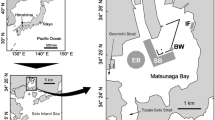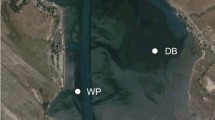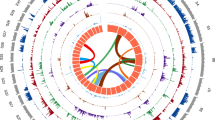Abstract
IN a previous note in NATURE1 we pointed out the association of a Labyrinthula-like organism with the wasting disease of the eelgrass along the American Atlantic coast. Since the publication of this announcement, we have performed a number of experiments in the laboratory and in the natural beds themselves, which indicate that this organism is a true parasite of Zostera marina. Communications from other investigators and examinations of specimens submitted from various points show also that this parasite is uniformly present in the infected beds on the Atlantic coasts of both Europe and America.
This is a preview of subscription content, access via your institution
Access options
Subscribe to this journal
Receive 51 print issues and online access
$199.00 per year
only $3.90 per issue
Buy this article
- Purchase on SpringerLink
- Instant access to full article PDF
Prices may be subject to local taxes which are calculated during checkout
Similar content being viewed by others
References
Renn, C. E., NATURE, 134, 416; 1934.
Cienkowski, L., Arch. Microscop. Anat., 3, 274; 1867.
Petersen, H. E., NATURE, 134, 143; 1934.
Mounce, Report of Biological Board of Canada, 1933; Ottawa, 1934.
Tutin, T. G., NATURE, 134, 573; 1934.
Author information
Authors and Affiliations
Rights and permissions
About this article
Cite this article
RENN, C. A Mycetozoan Parasite of Zostera marina. Nature 135, 544–545 (1935). https://doi.org/10.1038/135544b0
Issue date:
DOI: https://doi.org/10.1038/135544b0
This article is cited by
-
Causes of the eelgrass wasting disease: Van der Werff's changing theories
Netherlands Journal of Aquatic Ecology (1994)
-
Labyrinthula sp., a marine slime mold producing the symptoms of wasting disease in eelgrass, Zostera marina
Marine Biology (1988)
-
Recent developments in plant diseases in the United States
The Botanical Review (1941)
-
Persistence of the Eel-Grass Disease and Parasite on the American Atlantic Coast
Nature (1936)



